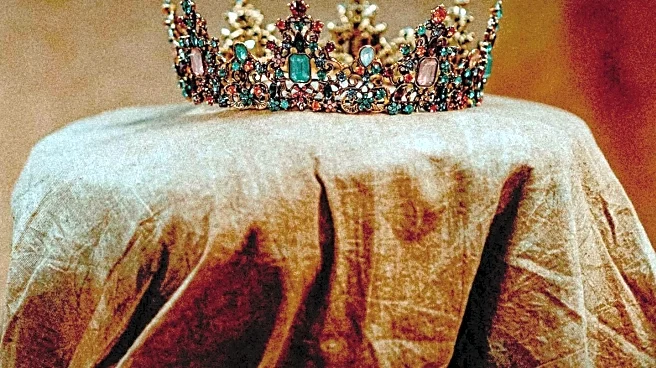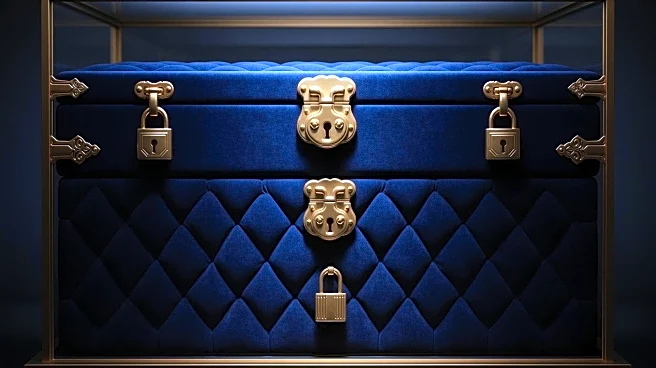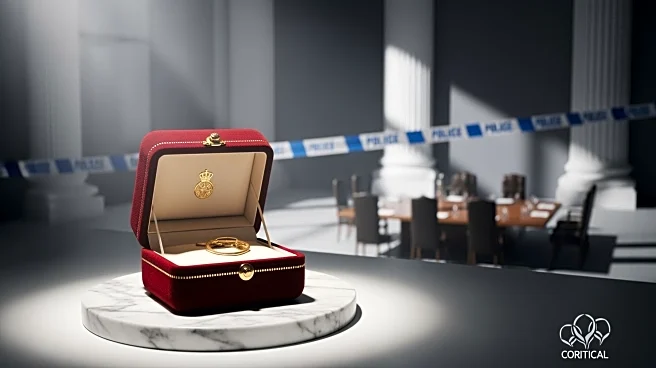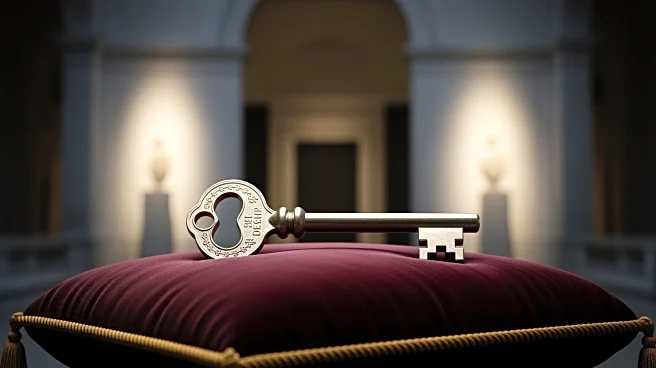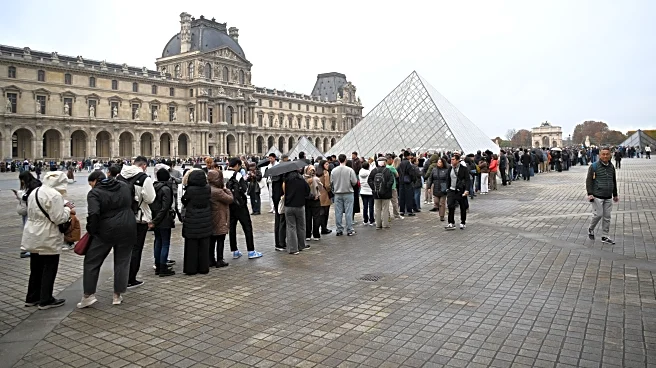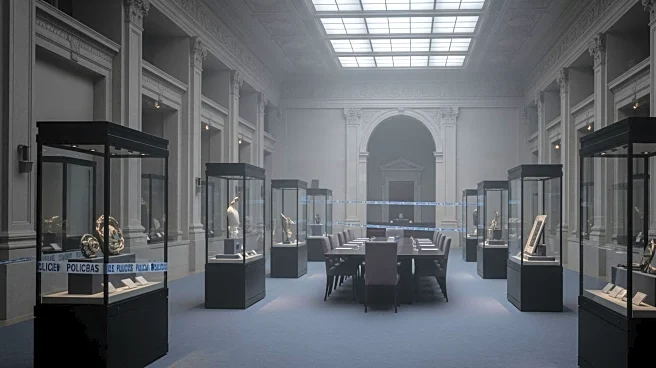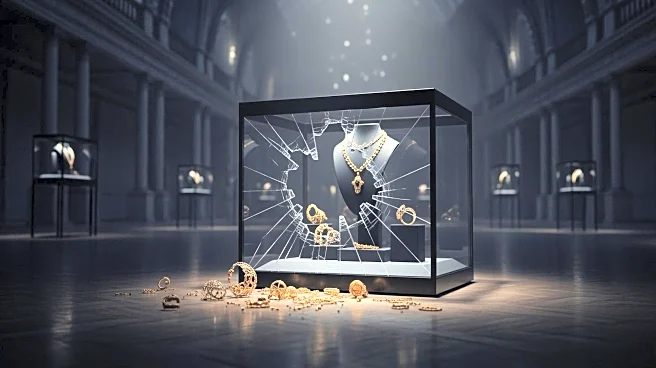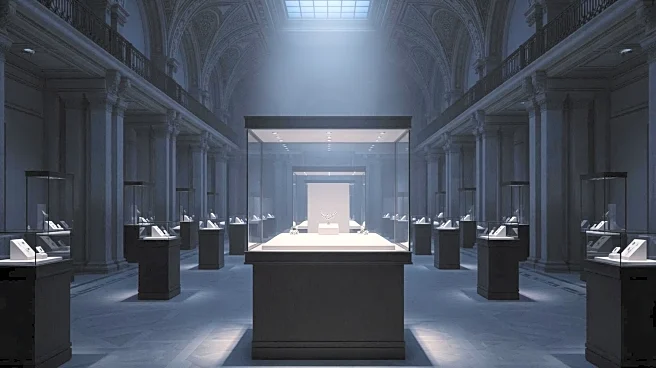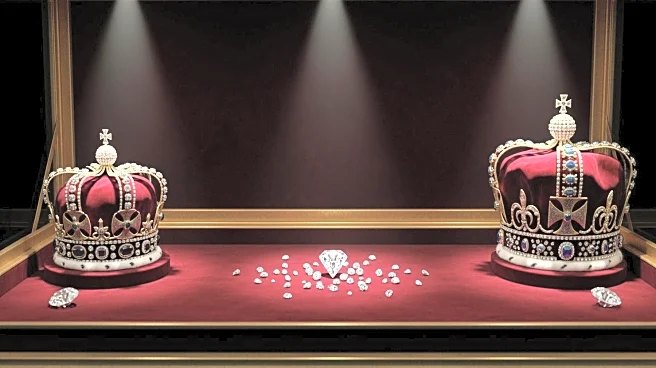What's Happening?
A daring heist at the Louvre Museum in Paris has resulted in the theft of several pieces of France's crown jewels, including an emerald necklace, earrings, and two crowns. The theft, which took place in broad
daylight, has left authorities scrambling to recover the jewels, valued at $102 million. The stolen items are not only of significant monetary value but also hold immense historical importance as symbols of France's royal heritage. The heist has raised questions about security at the Louvre, which has faced previous incidents of overcrowding and protests. The French government is under pressure to address these security concerns and recover the jewels before they are dismantled and sold off.
Why It's Important?
The theft of the crown jewels is a significant cultural and national loss for France, as these items are symbols of the country's royal history and heritage. The incident highlights vulnerabilities in the security of one of the world's most famous museums, potentially affecting its reputation and visitor confidence. The loss of these jewels could also have economic implications, as they are irreplaceable artifacts that attract tourists. The French government's response to this incident will be crucial in restoring public trust and ensuring the protection of other national treasures. The heist also underscores the challenges of protecting cultural heritage in an era of sophisticated criminal activity.
What's Next?
French authorities are conducting an extensive investigation to track down the thieves and recover the stolen jewels. The government may implement enhanced security measures at the Louvre and other cultural sites to prevent future incidents. The international art community is likely to be on high alert for any attempts to sell the stolen jewels, which are too famous to be easily sold on the open market. The outcome of this investigation could influence future policies on the protection of cultural heritage and the security of museums worldwide.
